Si vis pacem, para bellum
Remember these two now infamous quotes?
[Apr. 26, 2003] Al Franken: "Clinton's military did pretty well in Iraq, huh?"Since January 2003, the Congressional Budget Office (CBO) has been publishing The Long-Term Implications of Current Defense Plans based on the President’s and the Department of Defense’s Future Years Defense Program (FYDP).
[Dec. 08, 2004] Secretary of Defense Don Rumsfeld: "As you know, you go to war with the Army you have. They’re not the Army you might want or wish to have at a later time."
I first took a look at this report for Fiscal Year 2005. Remember the "peace dividend"? That's what paid down the deficit between 1992 and 1998 so the Clinton administration could claim a surplus in his second term. Well, here's what that looked like (look for the dates of the obvious dip, or what you might call "the saddle") ...
Fewer troops:
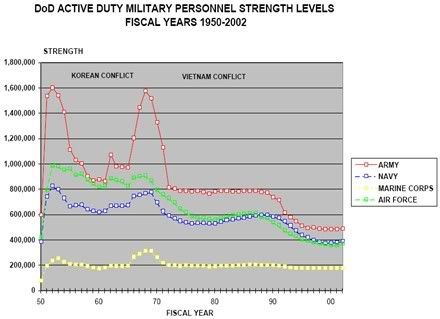
Smaller budget:
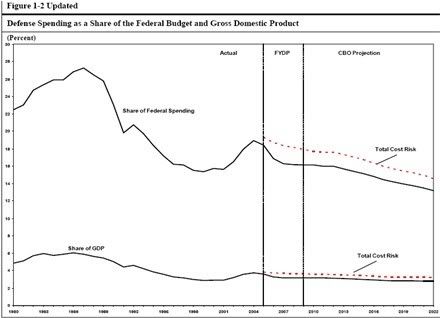
Less spent on everything:
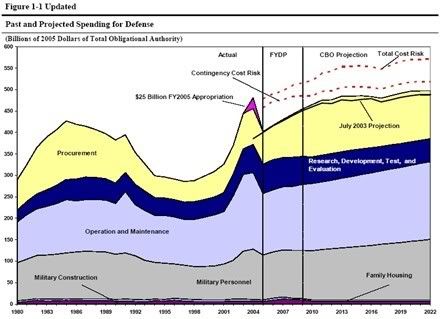
Less spent on the Services:
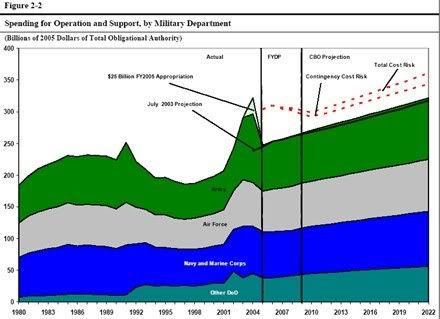
Less spent on the troops and equipment:
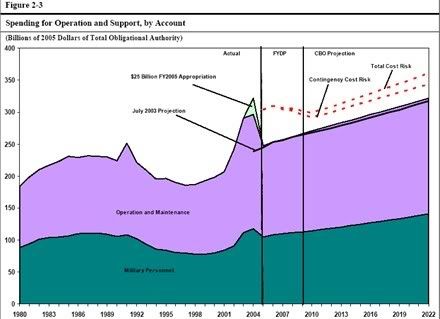
As you can also see, spending is up since 9/11. Way up in absolute dollars while still low as a percentage of Federal spending and GDP compared to the "Reagan buildup."
The Walter Reed fiasco got me thinking about this again (what do we spend on medical?). So I looked up the Fiscal Year 2007 report (pdf) to see what CBO projected for medical costs. Here's what it says, in part:
Pay increases for uniformed medical personnel account for less than 5 percent of the overall medical O&S growth that CBO projects between 2007 and 2024. Various other expenses—most notably, accrual charges, pharmaceuticals, and purchased care and contracts—play a much larger role (see Figure 5).15 Accrual payments make up nearly 46 percent of the projected increase in medical spending, growing at a nominal rate of 6.25 percent a year after 2007.16 In CBO’s estimation, accrual charges will double in real terms between 2007 and 2024.I'm one of those pessimists concerning the growth in entitlement spending (pdf), and rising (discretionary) medical costs for active duty and veterans can only add pressure to the system.
Footnotes:
15. Pharmaceuticals include those dispensed by military medical treatment facilities, the military’s retail pharmacy network, nonnetwork retail pharmacies, DoD’s mail-order pharmacies, and private-sector contractors under TRICARE. Purchased care and contracts include managed care support contracts, various other types of purchased care, and supplemental care for active-duty personnel. In the past, that category also included pharmaceuticals; but after 2001, DoD began accounting for pharmaceuticals separately in the FYDP.
16. The independent Board of Actuaries for DoD’s Medicare-Eligible Retiree Health Care Fund annually updates its estimate of the accrual charges necessary to fund the TRICARE For Life program, which is discussed in greater detail later. [my note: page 9 of the report goes into greater detail on the TRICARE For Life program and you can find more information on the Board of Actuaries at the DoD Office of the Actuary.]
Something to think about for 2008.
Previous: Iraq v2.0
----------------
si vis pacem, para bellum: If you wish for peace, prepare for war.
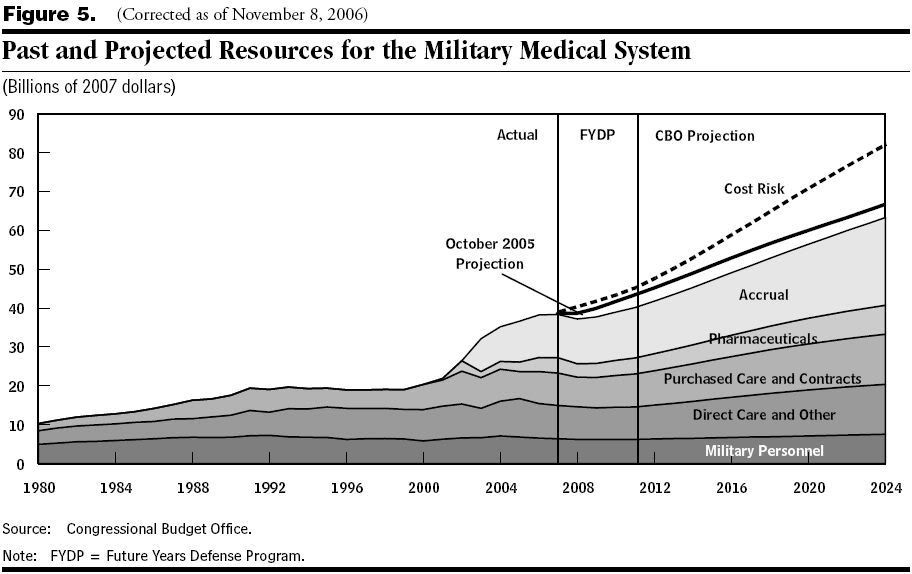





No comments:
Post a Comment